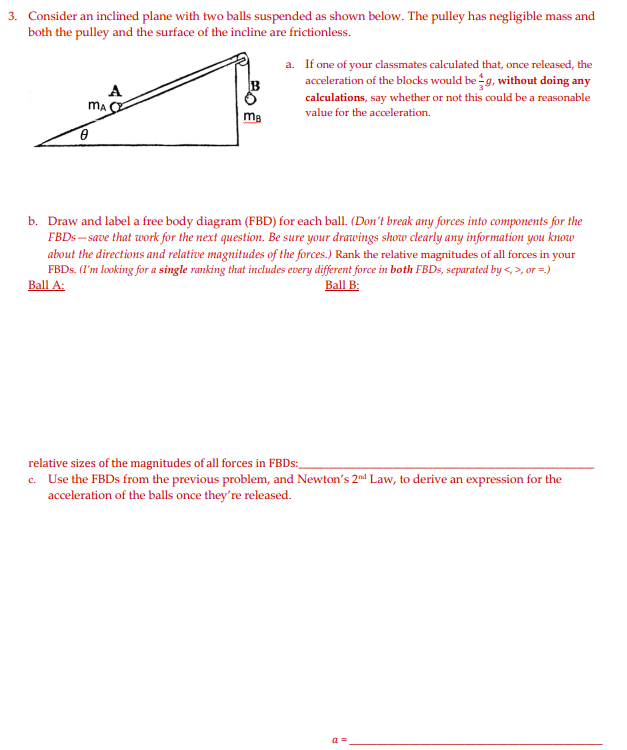Consider an inclined plane with two balls suspended as shown below. The pulley has negligible mass and both the pulley and the surface of the incline are frictionless. a. If one of your classmates calculated that, once released, the acceleration of the blocks would be 4 3 ?, without doing any calculations, say whether or not this could be a reasonable value for the acceleration. b. Draw and label a free body diagram (FBD) for each ball. (Don’t break any forces into components for the FBDs—save that work for the next question. Be sure your drawings show clearly any information you know about the directions and relative magnitudes of the forces.) Rank the relative magnitudes of all forces in your FBDs. (I’m looking for a single ranking that includes every different force in both FBDs, separated by <, >, or =.) Ball A: Ball B:
3. Consider an inclined plane with two balls suspended as shown below. The pulley has negligible mass and
both the pulley and the surface of the incline are frictionless.
a. If one of your classmates calculated that, once released, the
acceleration of the blocks would be 4
3
?, without doing any
calculations, say whether or not this could be a reasonable
value for the acceleration.
b. Draw and label a free body diagram (FBD) for each ball. (Don’t break any forces into components for the
FBDs—save that work for the next question. Be sure your drawings show clearly any information you know
about the directions and relative magnitudes of the forces.) Rank the relative magnitudes of all forces in your
FBDs. (I’m looking for a single ranking that includes every different force in both FBDs, separated by <, >, or =.)
Ball A: Ball B:
relative sizes of the magnitudes of all forces in FBDs:__________________________________________________________________
c. Use the FBDs from the previous problem, and Newton’s 2nd Law, to derive an expression for the
acceleration of the balls once they’re released.
*Please write an detail as much as possible

Trending now
This is a popular solution!
Step by step
Solved in 4 steps with 4 images









